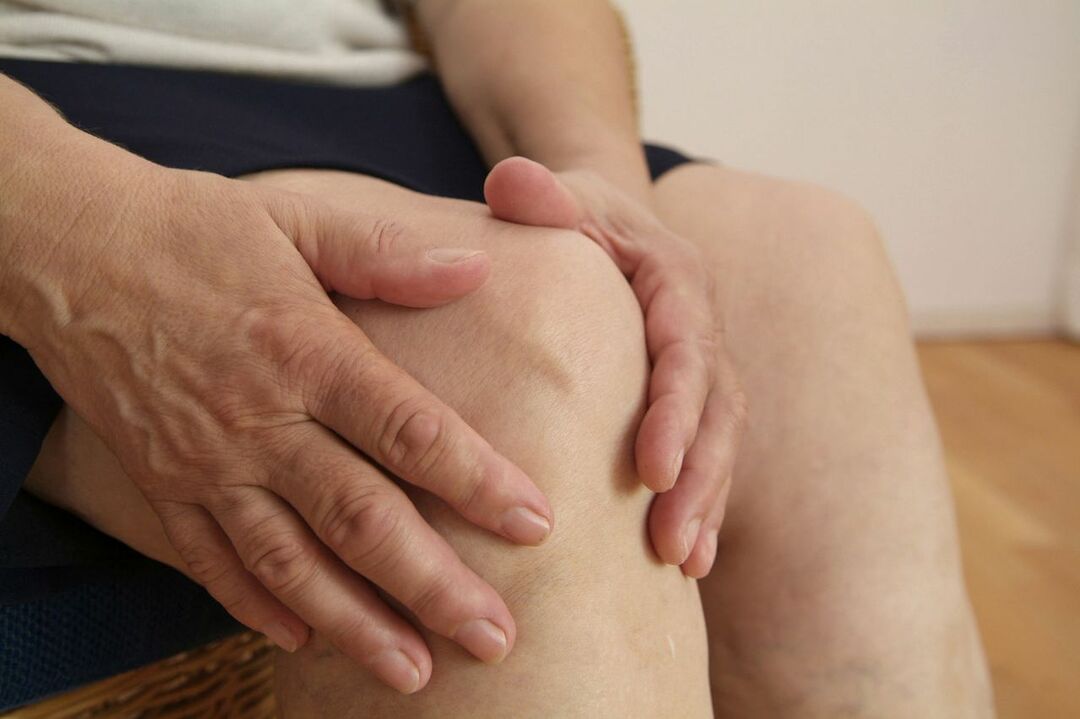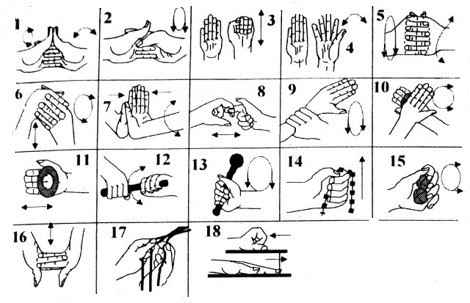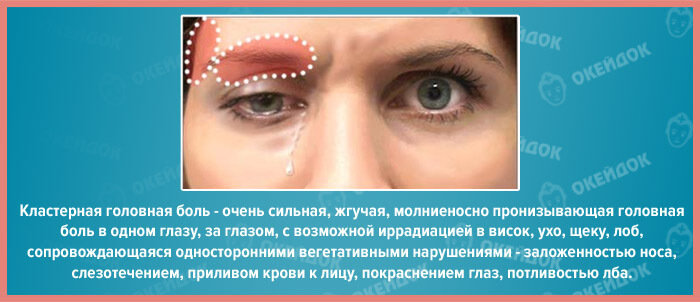BPPV: what it is, symptoms and treatment, exercise
Content
- What is BPPV?
- Etiological factors in the development of functional vertigo (causes)
- Features of symptomatic manifestations
- Diagnostic measures
- Instrumental research
- Therapeutic measures to eliminate pathology and discomfort
- Brandt-Daroff method.
- Semont's maneuver
- Epley maneuver
- Lempert's maneuver
- Surgical treatment of the disease
- Disease prevention
- Forecast
- Related Videos
What is BPPV?
Benign paroxysmal positional vertigo (BPPV) is a pathological condition of vestibular origin, which is characterized by paroxysmal manifestations of vertigo.
This state is provoked by changes in the spatial position of the human body.
The differences in this type of dizziness are the relative ease of treatment, and the possibility of self-improvement.
Etiological factors in the development of functional vertigo (causes)
Benign paroxysmal positional vertigo (BPPV), a very complex etiology condition, in some cases it is not possible to establish the true cause of the disease.
The most common causes of ADPG include:
- traumatic skull injuries and concussion;
- inflammatory processes in the labyrinth of the inner ear;
- the transferred surgical interventions in the head area.
Features of symptomatic manifestations

Symptomatically benign paroxysmal vertigo manifests itself as a feeling that objects located around rotate, this feeling appears after a sharp change in position body.
Paroxysmal dizziness usually manifests itself in the morning after sleep, it is difficult for a person to navigate in space after getting out of bed.
The duration of the paroxysmal period is, as a rule, no more than three minutes, then it independently passes mez using auxiliary techniques.
Additionally, benign paroxysmal positional vertigo manifests itself as dyspeptic disorders, which is a common symptomatic component for all types of vertigo.
Autumn is important in the diagnosis of the disease is that benign positional vertigo is not accompanied by syndromes of organic disorders on the part of the nervous system.
With this pathology, no pathologies develop on the part of the organs of hearing, sight or smell. Thus, the disease does not pose a particular threat to human life, but it causes some discomfort.
Diagnostic measures
For the definitive diagnosis of benign paroxysmal positional vertigo, specially developed Dix-Hallpike functional diagnostic tests are used.

Dix test -Hallpike is a purposeful technique with the help of which a disease is diagnosed.
To carry out this test, the doctor settles the patient on the bed, then takes the head with both hands and rotates it in front to the sides around then holding the head and puts it on the bed. After the exercise is done, the doctor should ask how the patient is feeling.
Usually, people with benign positional vertigo are convinced by doctors that dizziness after such a shake is a common condition for them.
Objectively observed in a patient, nystagmus, which is turned towards the floor to the side or to the top is depends on the direct localization of the pathological process in the semicircular canals of the internal ear.
In case of a negative effect, the exercise should be repeated a few minutes after rest. Sometimes it happens that after a diagnostic test in the supine position, a positive result it is not possible to achieve, but the state appears after the patient gets up from the couch and the body becomes sedentary position.
When repeating positional tests, the severity of the results, as a rule, is somewhat reduced, this must also be taken into account when making a diagnosis. As an addition to the positional test, you can use not only rotation towards the head, but also the whole body.
The most difficultly tolerated by patients is the change in body position from lying to standing.
Instrumental research
As an instrumental diagnosis of the disease, methods are used to assess the severity nystagmus for this purpose such techniques as electrooculography, videooculography are used.
In order to exclude organic pathology on the part of the central nervous system or oncological pathology, patients need to undergo magnetic resonance imaging of the brain. To exclude pathology on the part of otolaryngology, it is necessary to undergo a consultative examination with an appropriate specialist.
Differential diagnosis of benign positional paroxysmal vertigo
There are no differences from tumor-like formations in the brain, as well as pathologies from the posterior cranial fossa with benign development of dizziness. signs of damage to the sympathetic and parasympathetic nervous systems, common signs are symptoms of imbalance and dizziness of positional character.
Repeated performance of the positional functional test with normal dizziness is usually characterized by a decrease in the severity of a positive result, since in case of organic pathology, repeated testing does not affect the severity result.
Positional nystagmus can also manifest itself with a disease such as multiple sclerosis or an acute violation of the blood circulation of the brain, while all the symptoms of damage to the nervous system remain.
Therapeutic measures to eliminate pathology and discomfort
Conservative treatment without the use of drugs includes the following techniques:
Brandt-Daroff method.

The patient can perform such an exercise independently at home.
To carry out this technique, the patient needs to sit on the center of the bed and make several tilts from side to side. Then the patient is pricked back in a horizontal position and repeats the movements already in the supine position.
It is necessary to allow the body to rest for a minute, then repeat the indicated exercises of Brandt Daroff.
The technique for treating the disease is repeated three times during the day. The duration of the procedure is determined individually, depending on the general well-being of the patient.
Semont's maneuver

This technique can be performed both independently and with the help of a qualified specialist.
The patient sits on the bed, the doctor takes the patient's head with both hands and turns sharply, then points to the same side while not changing the position of the head relative to the initial plane.
The patient should lie down until all discomfort has disappeared.
After rest, without changing the fixed position of the patient's head, they return to a sitting position, turn the head and lay on the opposite side, the patient must also rest. This exercise is repeated 2-3 times, once a day.
In the event that a lobe suffering from benign paroxysmal dizziness has a history of cardiac pathology vascular system, before starting the procedure, tonic cardiac drugs are administered as a specific predication.
If during the manipulation, nausea and vomiting are manifested, antiemetic drugs are prescribed to patients.
Epley maneuver
A procedure of this nature is carried out only by qualified specialists. A feature of this method is that the procedure is carried out using smooth and slow body movements.
The patient should initially sit on the couch, the doctor takes his head with both hands and fixes the head by turning it to the side in the same position, the patient's head is laid on his back. After that, the person's body is turned over on its side, and then slowly seated in its original position.
This method of non-drug treatment is very effective and in most cases, repeating two or three sessions can help completely get rid of the pathological condition.
The effectiveness of this method depends entirely on how professional the specialist is performing this procedure.
Lempert's maneuver

This technique is carried out exclusively by a qualified specialist. The initial position of the patient should be seated over the length of the couch. Turning the head forty-five degrees, fix it in the plane of the horizontal body on the side of the focus of the pathological condition.
After this, the patient is placed in a supine position on his back and slowly change the position of the head in the opposite direction, then the head turn to the other side and change the position of the body from the back to the stomach while the head should rotate together with the human body.
The exercise can be repeated several times, but with the condition of maintaining a rest time.
Surgical treatment of the disease
Surgical intervention is carried out in cases where conservative therapy of the disease has not shown absolutely no positive results.
This method of treatment is carried out very rarely and in rather exceptional cases.
For this purpose, such surgical techniques are carried out as:
- filling the lumen of the semicircular bone canal of the inner ear with fragments from the bone structure, which is taken from another part of the skeleton of the human body. The most optimal for transplantation is the tibia;
- selective removal of nerve endings that innervate the vestibular canals of the human inner ear;
- total removal of structures and cancellous bone labyrinth;
- destructive destruction of labyrinth structures using specially selected laser systems.
Absolutely all methods of surgical intervention are extremely traumatic for a person and therefore they should be carried out only for special medical reasons.
After the surgical intervention, the patient is obliged to undergo antibiotic therapy in order to prevent the development of complications of an infectious nature.
For the prevention of dysentery as a side effect of antibiotics, the patient is prescribed probiotics in the complex.
Disease prevention
Preventive measures for benign positional paroxysmal vertigo on to date have not been developed since the etiological factors of development have not been fully clarified diseases.
As a recommendation for patients, it is necessary not to drive a car for some time.
The pathological condition can persist for several days or weeks after the treatment. As for the restoration of working capacity, it can also be difficult for several weeks, but one should take into account that the fact that benign positional vertigo can recur over time and when that moment comes is not known.
Forecast
The prognosis for recovery is usually favorable, this condition does not pose a particular danger to the patient's life. Depending on what disease or damage could provoke the development of this condition, further recovery and the effect of the treatment carried out depend.
The prognosis for full recovery also depends on how timely the patient sought qualified medical care.
The danger of this disease lies in the fact that it is quite difficult to carry out diagnostic measures, while if it provokes the disease an infectious disease of the inner ear with an advanced infectious process, infection can spread into the cranial cavity and lead to death for the patient.



